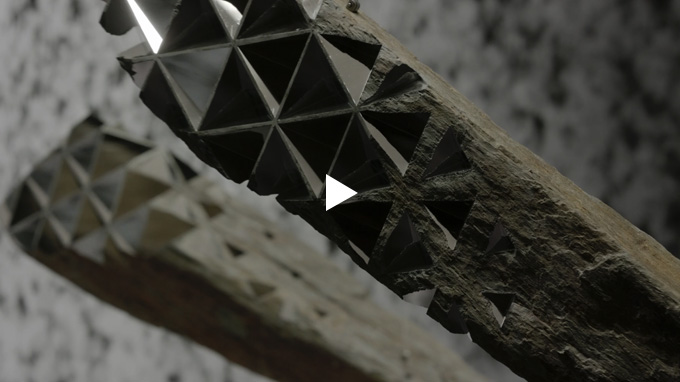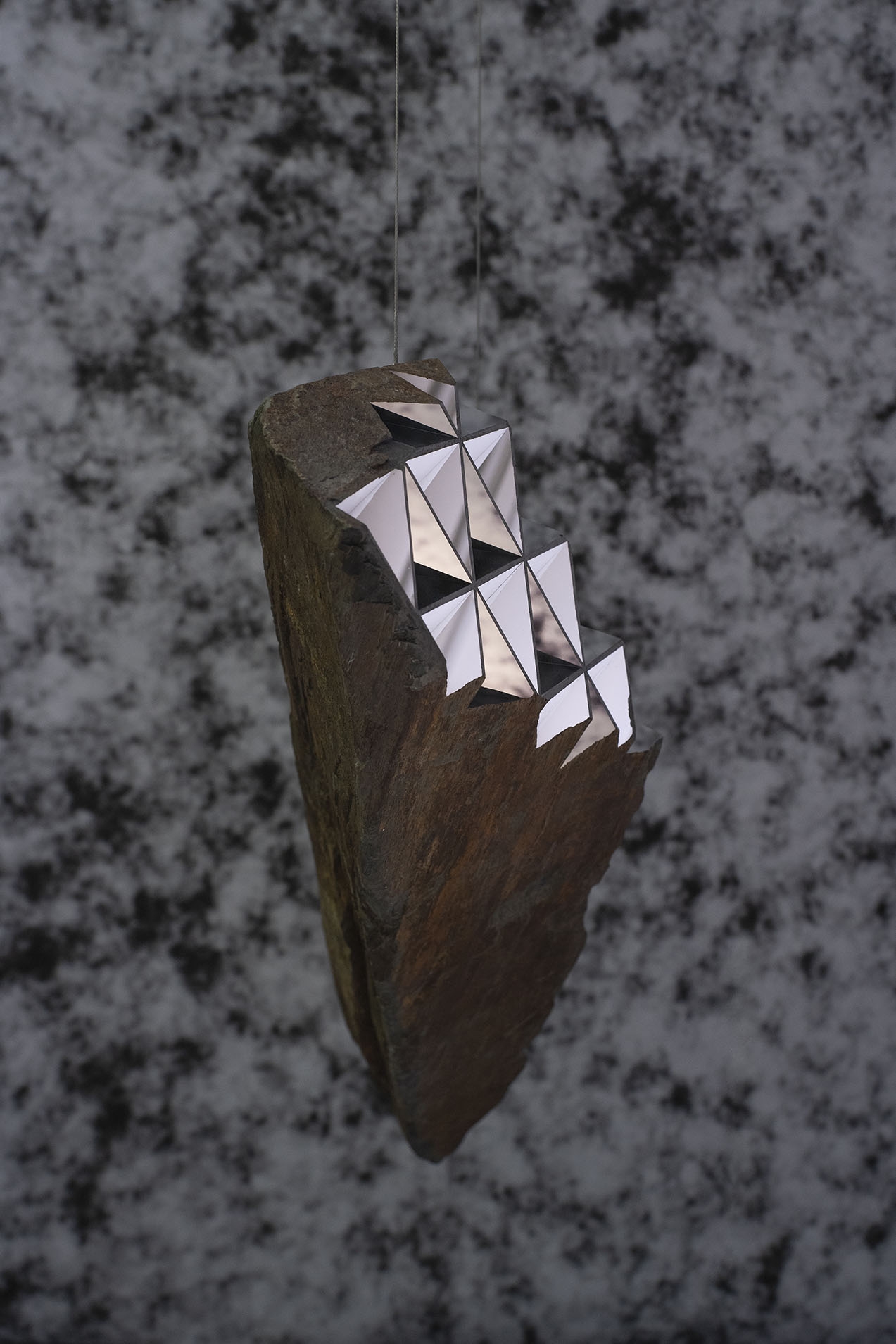
‘Whole Earth Archive’, alexander levy, Berlin. Time Apparatus (Delta) | first surface aluminium mirrors on polymer layer in slate boulders, 40 x 40 x 158 cm, 2022
Three massive rotating slate stones with retroreflective mirror surfaces entitled Time Apparatus float at the centre of the exhibition space. Evoking images of orbiting asteroids, the sculptures represent models of von Bismarck’s envisioned space archive: “Looking far into space means looking far back in time; this leads to the conclusion that, reversely, an observer in space, would see Earth as it appeared in the past.” “Combining the principle of the limited speed of light with a set-up of huge mirrors in the cosmos would allow us to access this past. The light radiating away from Earth can be understood as a storer, the mirrors placed in the cosmos as a provider of data.” The retroreflective structure of the Time Apparatus-sculptures formulates this idea by using microscopic mirror planes that bounce back each image to its source.
The entire gallery space - walls, floor and ceiling - is covered with images of the Cosmic Microwave Background (CMB). These visuals expand on the idea of the universe as an archive of itself since the CMB is leftover radiation from the Big Bang and thus the oldest light in our universe. The CMB also functions as proof that all visual information in the universe is preserved forever.-
The possibilities of looking or going back in time have been a human desire expressed in various artistic forms and theoretical science. But, rather than thinking of a concrete experience in other decades or past times, von Bismarck reflects on the idea of an “objective history” that is not filtered and assessed through the writing and concepts of history, which are biased. The way historians or contemporaries interpret historical circumstances and structures is always subject to change, which makes it difficult, if not impossible, to have a neutral reflection of any given event. Those who write about history necessarily propose an interpretation of the past and postulate causalities and connections for this purpose. In the end, a utopian idea such as a history that is not written seems nearly as utopian as von Bismarck’s model of a technical construction to observe Earth’s events. However, he argues: “The mirrors are comparably easy to build, but need to be sent into space way before we will be able to build a telescope powerful enough to look through them.” In his practice, Julius von Bismarck researches processes of perception which shape our understanding of the natural world. Through his conceptional video, photographic and sculptural work, he regularly unmasks perspectives and schemes on nature and landscape resulting from already existing and historically developed narratives. In revealing this prejudice or copy-paste mentality, he offers and adds new and autonomous perspectives. With this exhibition at alexander levy, he expands his field of interest from earthly grounds into space.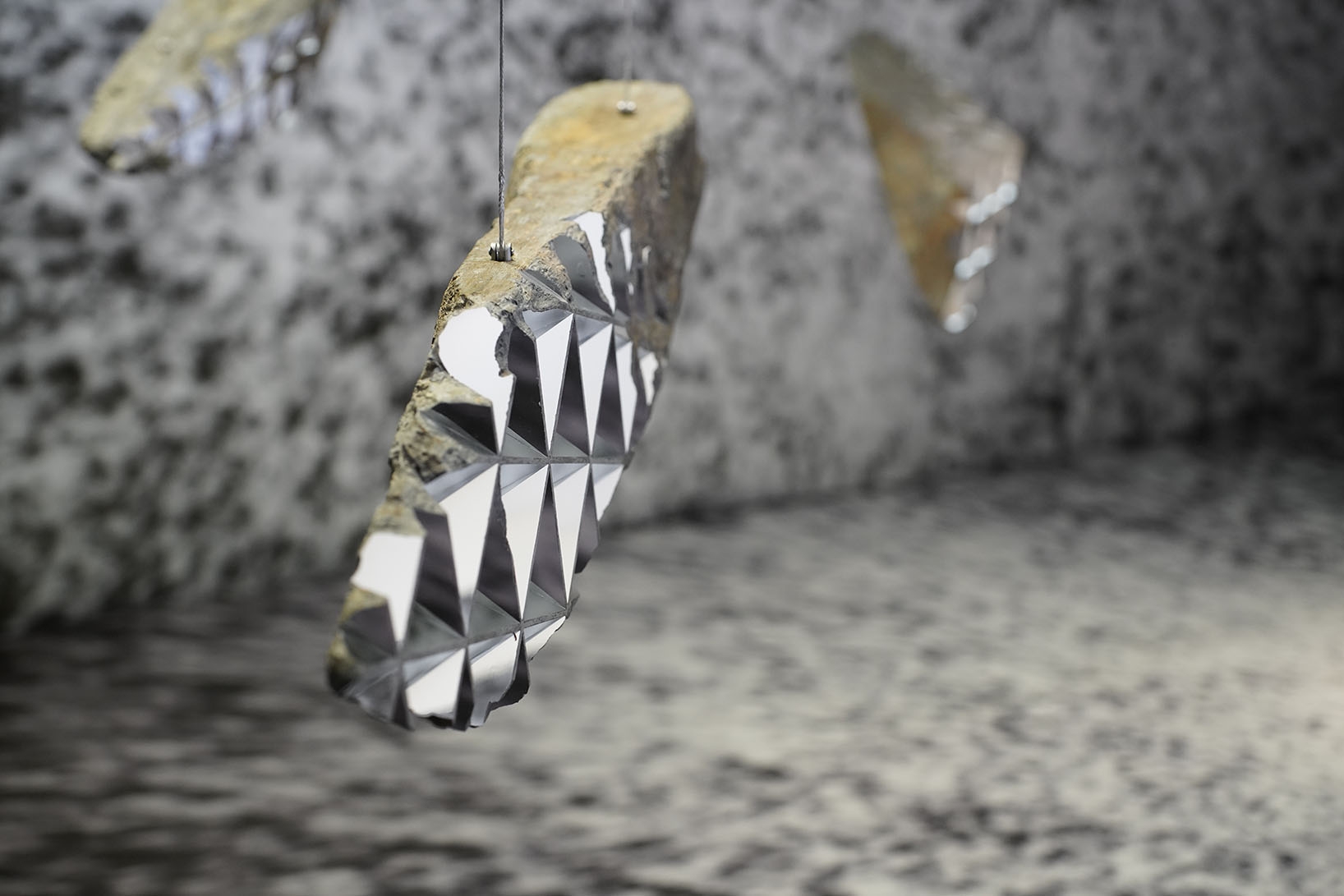
‘Whole Earth Archive’, alexander levy, Berlin. Time Apparatus (Iota) | first surface aluminium mirrors on polymer layer in slate boulders, 2022
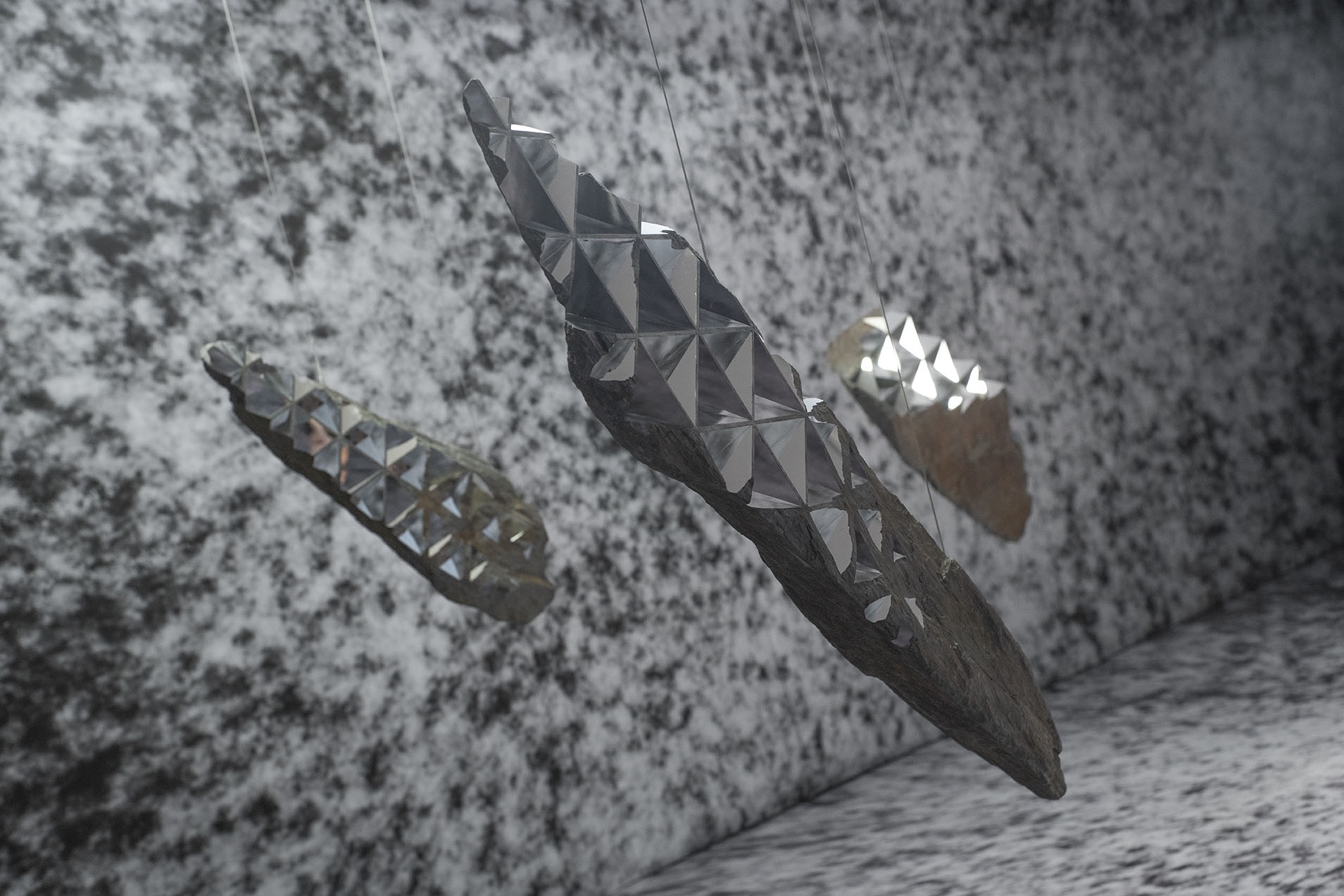
‘Whole Earth Archive’, alexander levy, Berlin. Time Apparatus (Iota) | first surface aluminium mirrors on polymer layer in slate boulders, 2022
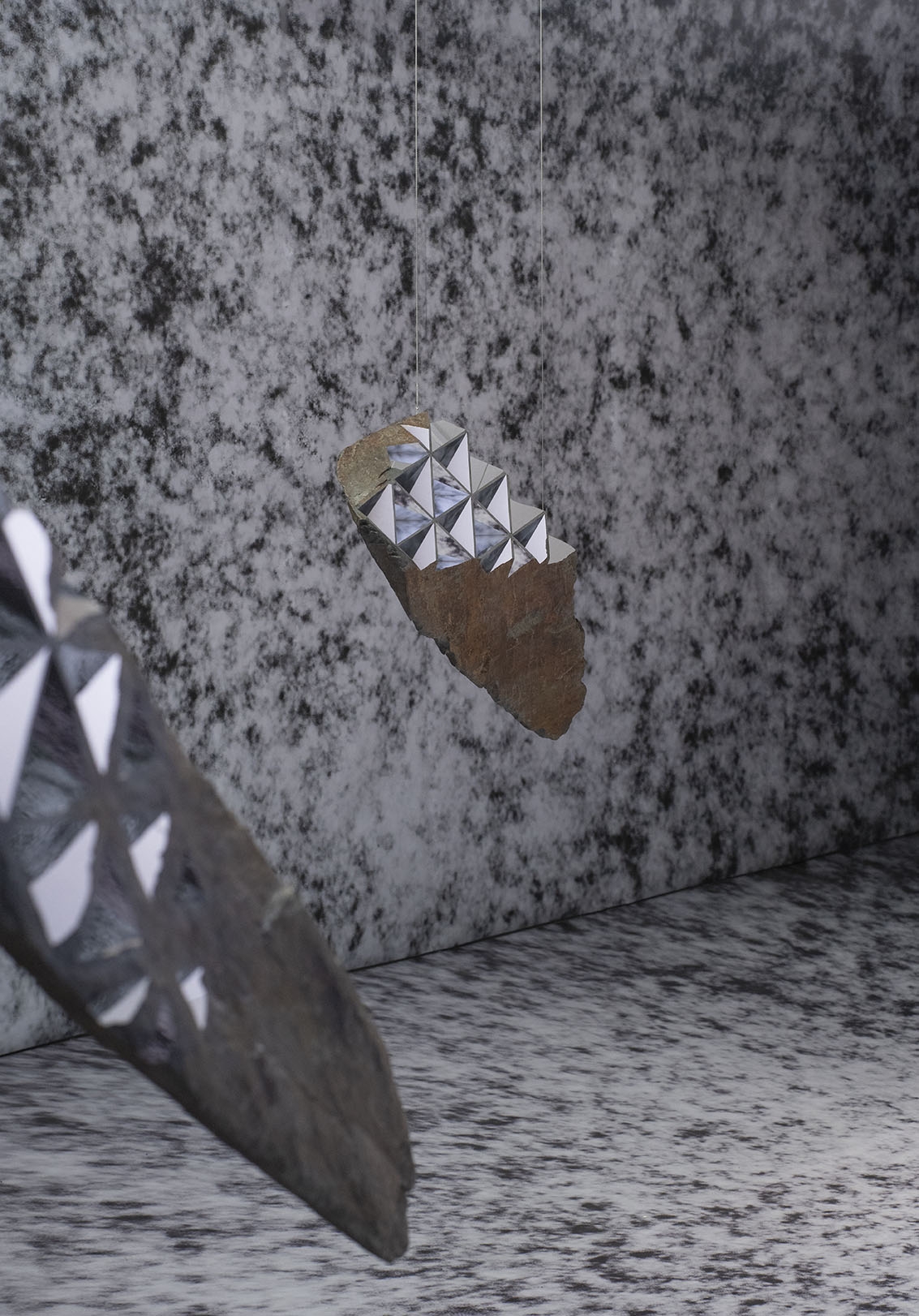
‘Whole Earth Archive’, alexander levy, Berlin. Time Apparatus (Delta) | first surface aluminium mirrors on polymer layer in slate boulders, 2022
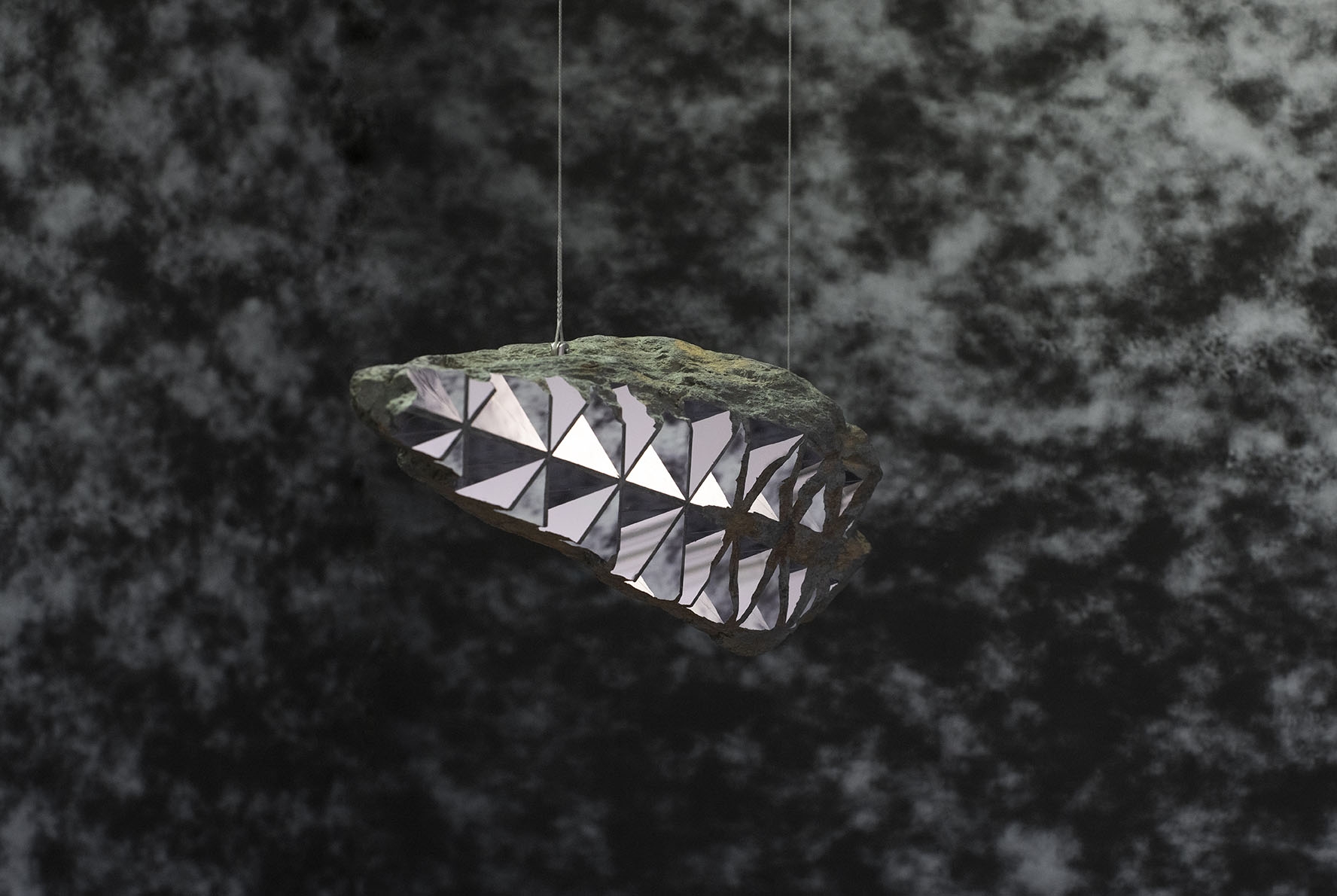
‘Whole Earth Archive’, alexander levy, Berlin. Time Apparatus (Gamma) | first surface aluminium mirrors on polymer layer in slate boulders, 22 x 34 x 120 cm, 2022
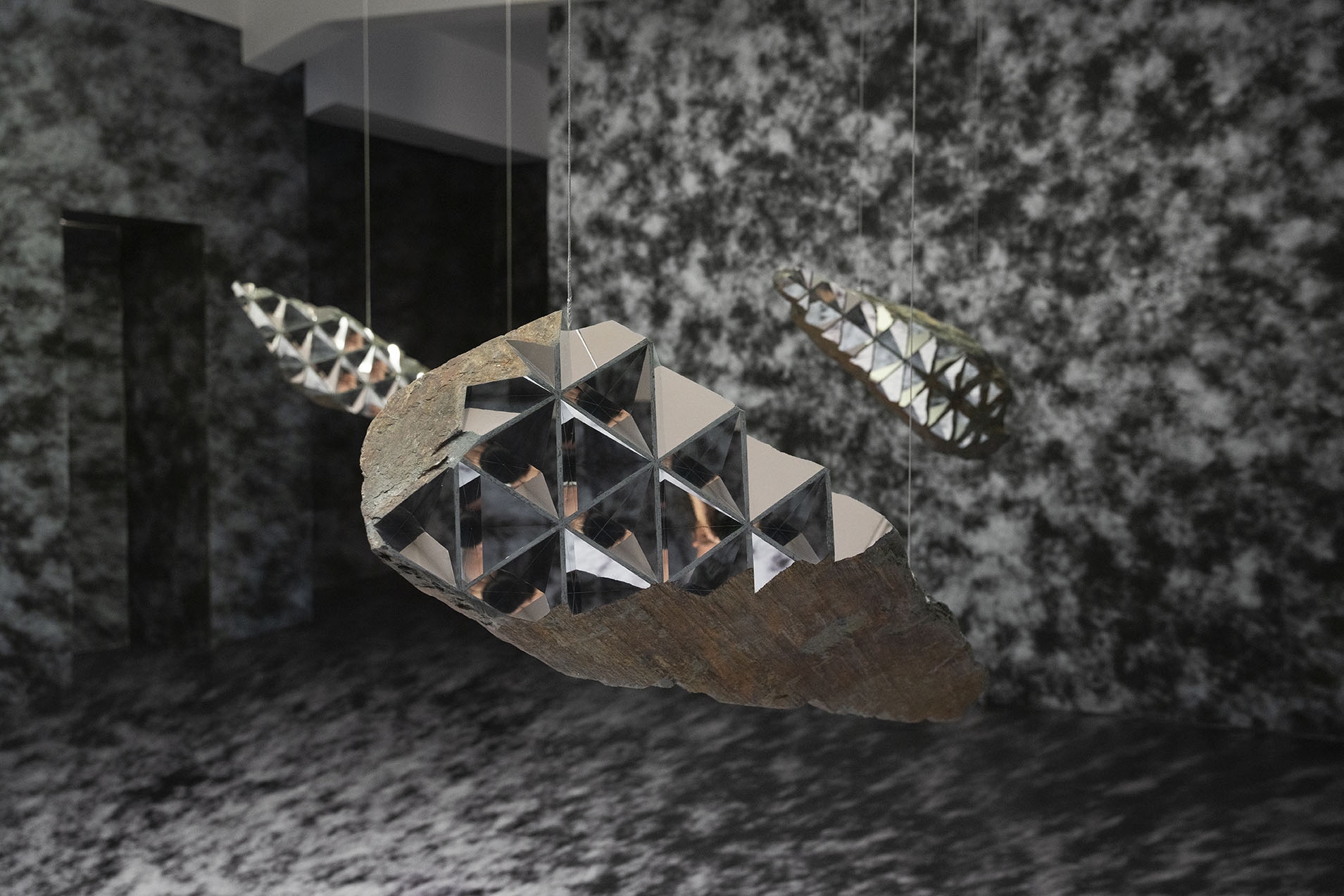
‘Whole Earth Archive’, alexander levy, Berlin. Time Apparatus (Delta) | first surface aluminium mirrors on polymer layer in slate boulders, 2022

‘Whole Earth Archive’, alexander levy, Berlin. Time Apparatus (Delta) | first surface aluminium mirrors on polymer layer in slate boulders, 18.6 x 31.5 x 167 cm, 2022
